For more details on the workshop go to RCEM Learning
This came up on the day as something people were quite interested in. Common interests were
- Induction programs
- Storing and collating the departmental teaching activities
- Storing and organising guidelines
- Promotion of your ED and improving recruitment
As we saw on the day setting up a website is fairly straightforward. We highlighted the pros and cons of a woprdpress.com versus a self hosted site and most seemed to lean towards the self hosted for all the added functionality available
A number of people raised concerns about representing a hospital department outside the official sanction of the trust. This is very legitimate and I would encourage you to speak with your communications team and even IT folk. The best example i’ve seen of a department website is the one from Edinburgh Royal Infirmary. They promote the department and haven’t shied away from engaging patients and helping them with their journey through the ED. A site like this will only improve the reputation of the trust.
Assuming you’ve got permission (or asked for forgiveness…) let’s look at a few things you could do
Induction Programs
This is relatively low hanging fruit in my opinion. We have so many juniors rotating so frequently that need to have some kind of ED specific induction so that they’re up to speed with for example the ED approach to chest pain (as opposed to the medical team’s approach to chest pain.) Traditionally this involves giving the same lecture every 4-6 months to a new group of juniors.
There’s no reason that this can’t be done as an online educational module to be completed in the first week of their rotation.
As a little aside please be sure and arrange appropriate remuneration for this. If you’re asking them to do 6 hours work then this needs facilitated in the rota NOT as something to do in their free time.
I set up a very basic induction series in a couple of hospitals I’ve worked and I’ll run you through the technical side of these. Be aware that the success of this still depends on someone ensuring that the docs complete the module which hasn’t always happened in the institutions I’ve been in.
Of note St Emlyns have been doing this for years and at a much higher level. All I’m doing here is documenting my very simple and fumbling efforts.
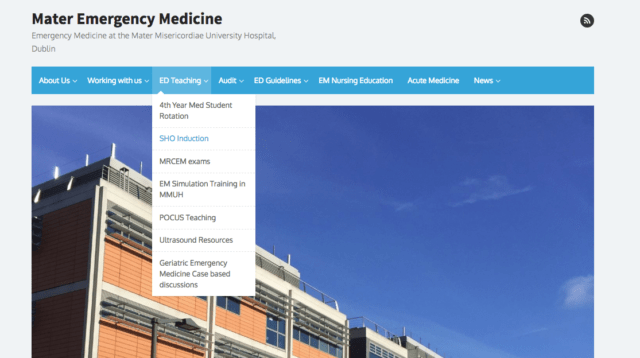
In this department site we had an SHO induction.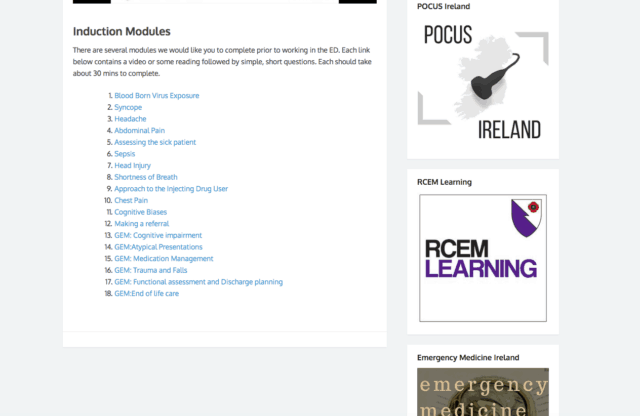
We created a number of modules for our doctors to complete.
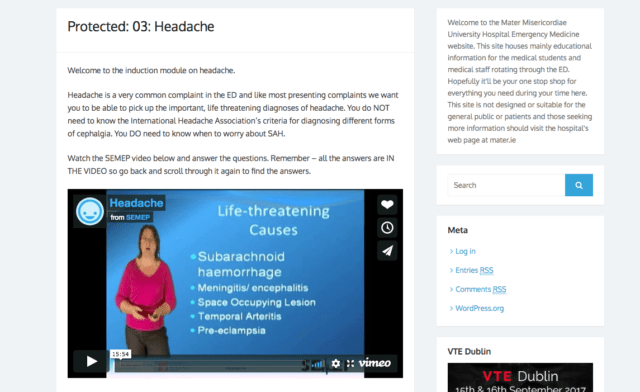
In this example the educational material was a 15 minute video produced by SEMEP, these are freely available online and are set at about the right level for a new junior doctor coming to your ED. It would probably be better to record your own local material but there are lots of great resources already out there.
After watching the video they are expected to answer a few short questions on an embedded google form. This is one of the key steps – not because the questions are a particularly good way to assess learning but they do ensure that the doctor has actually watched the material. For those with a requirement to have a documented induction then this process ensures a paper trail that it actually happened. I am well aware that this does not make it effective education.

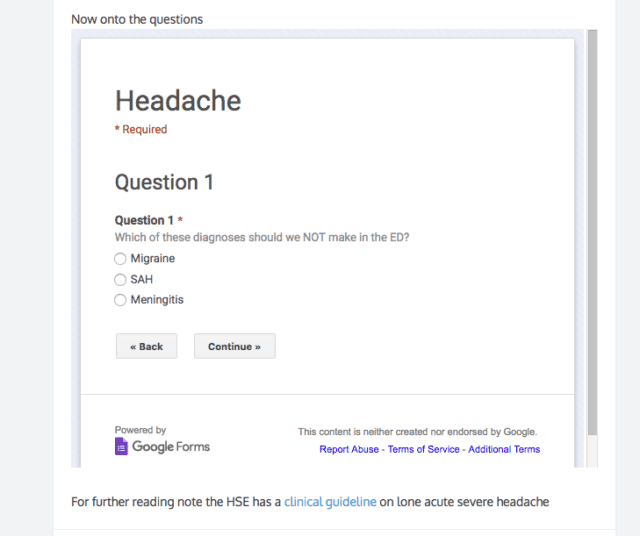
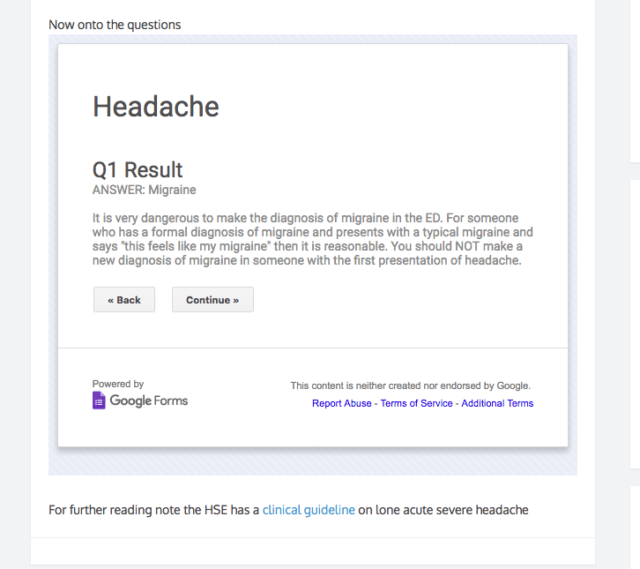
You can set as many questions as they like. I used 5. As mentioned the questions are mainly there to show the trainee as watched the material.
Once submitted the google form will populate a google spreadsheet.
There are some limitations with this as a lot of trusts will block video sites and any google apps so that your trainees won’t be able to complete the form or even see the video sometimes. It would also be nice to be able to automatically generate a certificate of completion once all the induction modules are complete.
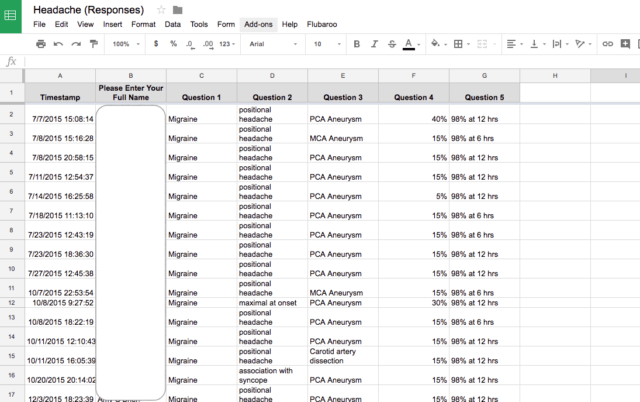
This can be reviewed by the educational supervisor to ensure trainees have completed te module. Using google scripts you can set up more advanced functions like automatically generated emails when a trainee completes a module. This may have improved in the past few years since i set this up but i found it quite cumbersome at the time.
There are better ways to do this using Learning Management Systems. This is apparently a massive topic in itself and there are lots available. A local colleague put me on to Namaste and Watu quizzes
This is a lot more structured and allows you to assign and monitor an individual’s learning in much more detail.
It’s a plugin in wordpress and while a little cumbersome, it’s free and fairly easy to use.
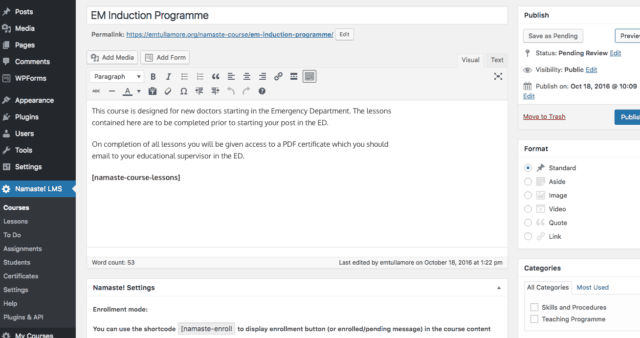

I used the same videos from SEMEP but for the questions I used the Watu Quizzes plug in. This allows you to design all the questions within wordpress and it got round the firewall issue we had with google forms.
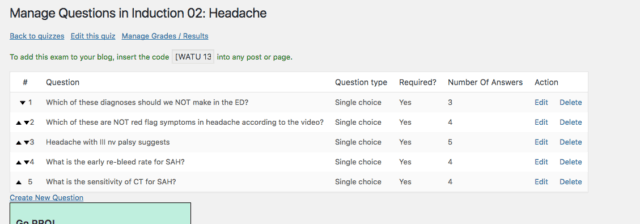

As you can see the end result is very similar to our initial example.
The nice thing is Namaste can be setup to email a pdf certificate of completion at the end of all the modules.
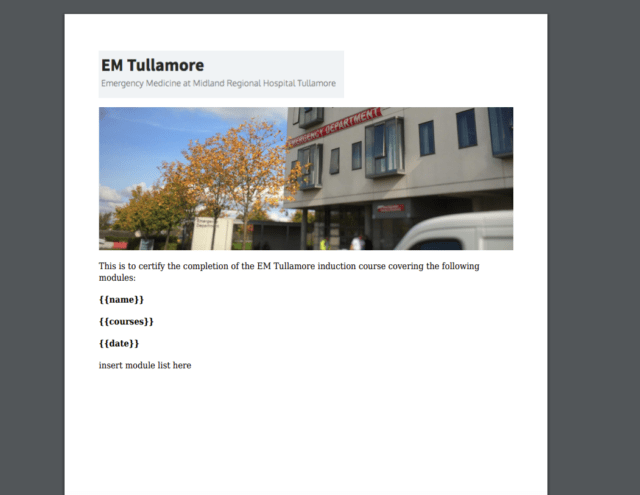
I think this is a better way to do it overall but it is a bit more cumbersome in the set up.
Again, as we discussed – this does not make your education any better in any way, it can help with dissemination and administration of your education but if your education was a bit crap to start with then it’ll still be crap with a website.
Storing and collating the departmental teaching activities
We all know that it’s very difficult to get everyone together for teaching at the same time. So the idea of collating and storing all your regular activity in one place is a great idea. There are various ways to do this.
- Upload the power points
- I think this is a particularly poor way to do things as @ffolliet is keen to remind us the slides are the least useful part of the presentation
- Upload a recording/screencast of the presentation
- This isn’t bad but requires either a pre or post recording of the presentation so the presenter has to give it twice
- Or you record the screencast live which requires a reasonable degree of technical knowledge, equipment and coordination
- You do a live recording of everything
- This is great, see Maryland CC project as a great example of this
- However it’s the most time, knowledge and equipment intensive.
There are lots of opportunities to use a flipped classroom model to provide good educational resources. But once again a website does not magically make this happen. If you have no one committed to engaging trainees and providing high quality education then a website will not fix this.
However if your department’s education is the bomb then you definitely should be sharing it and a website is a great way to do that.
Storing and organising guidelines
Hospital guidelines are often strewn throughout the hospital intranet and frequently difficult to find. It seems like a great idea to collate all these in one place.
However as soon as you download that pdf and upload it to your own ED bespoke site the document is no longer controlled and might be out of date and you would have no idea. There are lots of information governance issues here so I would strongly suggest engage someone else before taking hospital wide guidelines outside of the intranet
In one place I worked we had access to an ED specific guideline repository on the intranet where i could link to all the relevant hospital guidelines on the intranet. That way if that file was updated the link would either die or it would link to the new file.
In another hospital we had our own paper based ED handbook. This was ED specific and included advice about what to do with specific conditions out of hours. The ED itself took responsibility for the contents of that book. I simply digitised it on the ED website so that it was easier to find, update and link to external resources. It was also now searchable. It stays behind a password that changes every 6 months.
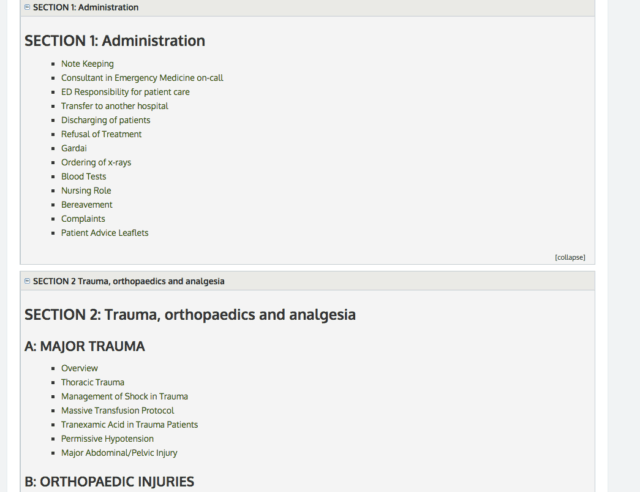
Promotion of your ED and improving recruitment
This can work quite well, but once again only if you actually have something decent to offer. If you offer great training opportunities then yes a website will help publicise that, but if you just want more middle grades for service provision then don’t expect much.
In one place I worked they created a number of fellow jobs with significant non clinical time (ultrasound and education for example). These were available on the ED website (but also on my own which gets significant traffic and is likely to be the deciding factor in this case…) and we had a number of staff who were investigating working in EM in Ireland and ended up applying for jobs.
Linda Dykes in Bangor has done a lot of similar work as have the EM3 team.
So a site can be useful to promote and recruit but it is not magical – you need actual substance behind it and it is not a panacea.
